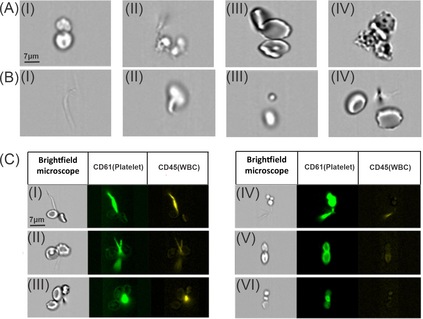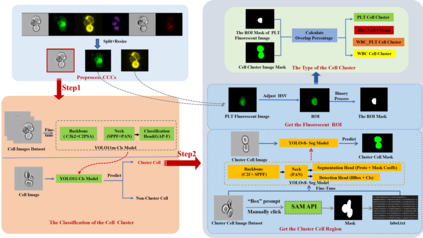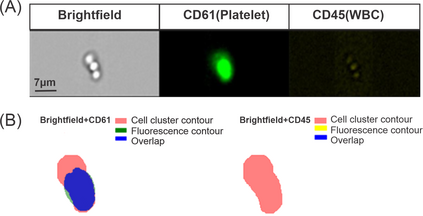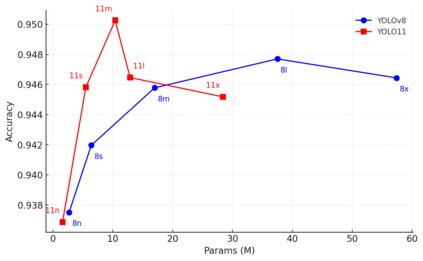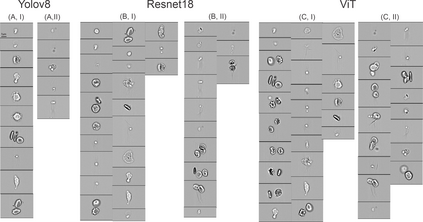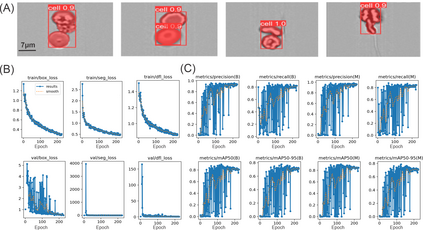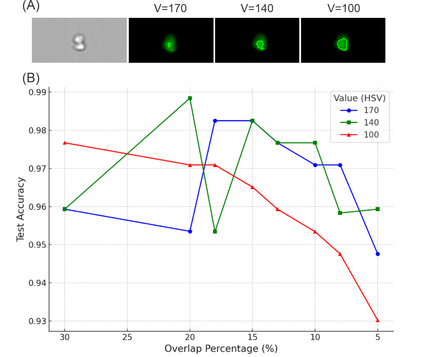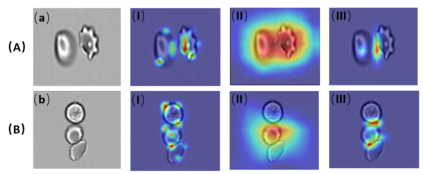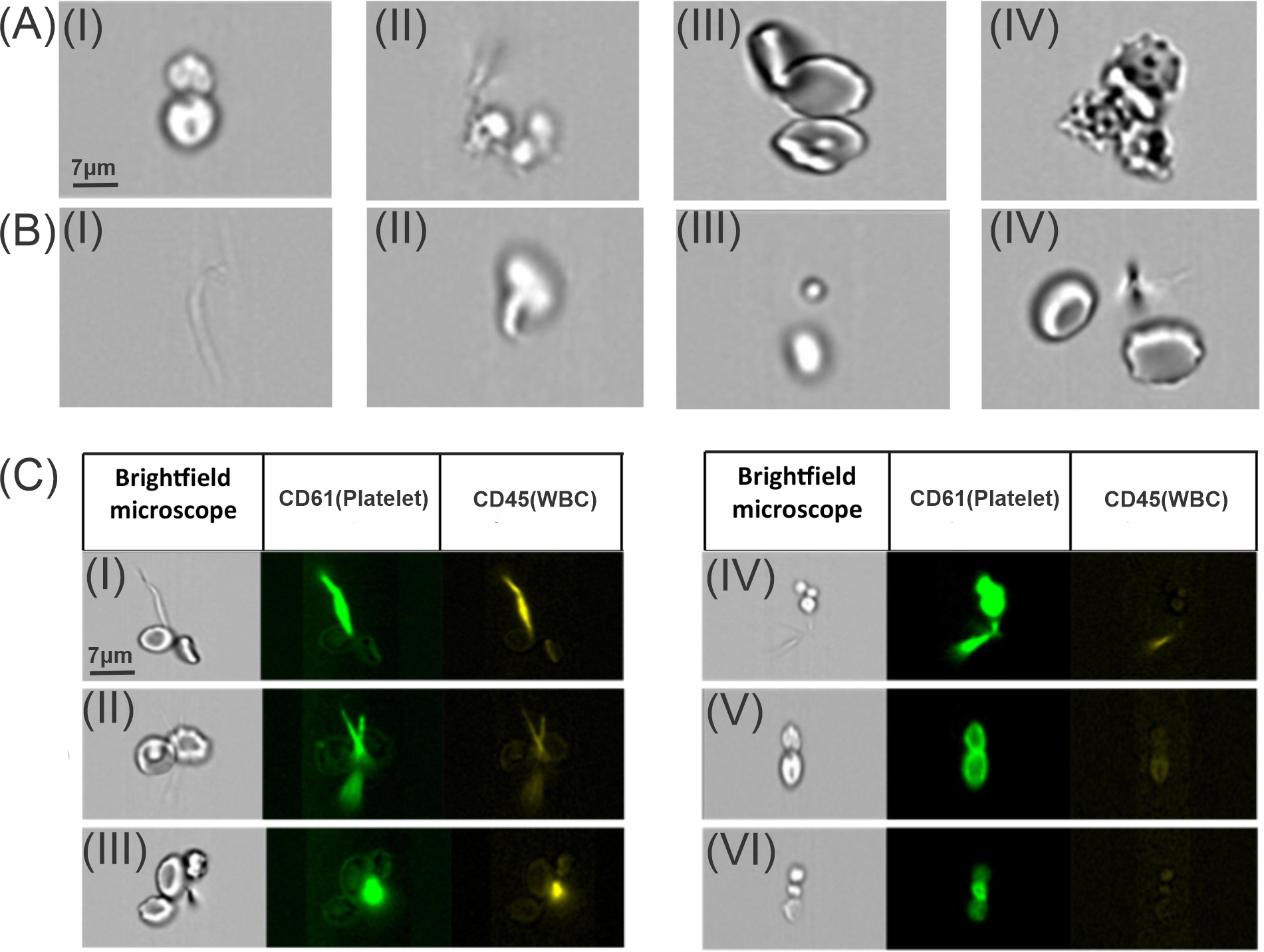Circulating blood cell clusters (CCCs) containing red blood cells (RBCs), white blood cells(WBCs), and platelets are significant biomarkers linked to conditions like thrombosis, infection, and inflammation. Flow cytometry, paired with fluorescence staining, is commonly used to analyze these cell clusters, revealing cell morphology and protein profiles. While computational approaches based on machine learning have advanced the automatic analysis of single-cell flow cytometry images, there is a lack of effort to build tools to automatically analyze images containing CCCs. Unlike single cells, cell clusters often exhibit irregular shapes and sizes. In addition, these cell clusters often consist of heterogeneous cell types, which require multi-channel staining to identify the specific cell types within the clusters. This study introduces a new computational framework for analyzing CCC images and identifying cell types within clusters. Our framework uses a two-step analysis strategy. First, it categorizes images into cell cluster and non-cluster groups by fine-tuning the You Only Look Once(YOLOv11) model, which outperforms traditional convolutional neural networks (CNNs), Vision Transformers (ViT). Then, it identifies cell types by overlaying cluster contours with regions from multi-channel fluorescence stains, enhancing accuracy despite cell debris and staining artifacts. This approach achieved over 95% accuracy in both cluster classification and phenotype identification. In summary, our automated framework effectively analyzes CCC images from flow cytometry, leveraging both bright-field and fluorescence data. Initially tested on blood cells, it holds potential for broader applications, such as analyzing immune and tumor cell clusters, supporting cellular research across various diseases.
翻译:暂无翻译

